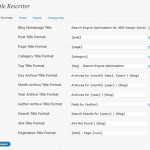For those of you unaware of the premise, search engines utilize multiple indices simultaneously to assign relevance to specific term weights, sort data, assess connectivity or assign structure to data.
The consolidated index we typically view (and know as the Google homepage or toolbar) is only the tip of the iceberg, yet this is where SEO focuses its attention.
Granted that tip that Google uses to index, parse and extract information from is more than enough to find great websites, purchase cool products or query the ever expanding database shared across the vast network of data centers they connect through cloud computing.
But what happens when a rollback or SERP roll-up from the past is required to apply data from a snapshot a year ago or new algorithm is introduced?
With the recent shift / fluctuation of rankings in the search engine result pages (pulling pages from page 3 to page 1, moving top 10 page 1 results to page 2, etc.) I think we now have that answer. Based on the volatility of search results as of late, there is a clear display of multiple indices overlapping in an attempt to consolidate weights and measurements.
Many could speculate that this is through a redefinition of page rank and tweak to the algorithm and how it assesses connectivity, the reweighting of the no-follow tag, as well as new algorithms being integrated into the main index, but how will this affect business for most that are susceptible to such violent SERP fluctuations?
Many websites live or die by their search engine result page positions. If you have been on the first page for as long as you can remember and then all of a sudden your website simply falls out of grace with the current weighting mechanism, scratching your head and losing sleep at night is only the beginning of the ordeal.
For most competitive industries, page two is simply not good enough for most (as most consumers click search results above the fold). Yet, Google is known for constantly tweaking their search engine algorithms to (a) increase the degree of relevance their search results produce which establishes them as the premier search engine online and (b) to keep others from getting to comfortable and gaming the system.
Regardless of why, all I can say is that there is a reordering of relevance occurring as we speak (as it appears) for specific queries and keywords.
It is almost as if a new algorithm is targeting top ranking positions and then comparing vast sets of data from snapshots in the past, throwing in a wildcard position (which those pages from the past rotate through) and then based on a factor similar to the least common denominator assigns a new position in the top 10 ranking for the root keyword.
The reason I say this is, I have tracked multiple keywords over time and in addition to having a photographic memory about SERP positions remember specific timelines when specific search results were prominent for specific keywords.
Yesterday in particular, I witnessed something I have never seen before which was like a blast from the past remix to present where the search engine result pages were shifting every time you refreshed the page and showcasing another website for a particular keyword that either fell from grace or simply was a snapshot from a previous time-period.
Almost as if it were the return of the legacy / ghost ranking and the web as we know it was stuck in re-runs for top level queries. All I can say is, I hope that the Google index is a better place as a result of the new rollout and for those websites caught in the ebb and flow, buckle your seatbelts and hold on for a wild ride.
The last time I saw something like this, it was directly related to the amount of trust a domain had and how many sites from peer review were essentially insulating it from above from this degree of volatility.
Since the link osmosis / vouch factor has shifted as Google shifts away from dependency on the co-occurrence / link graph model as an indicator of trust with the no-follow conundrum, it is too early to speculate what the end result will be and which websites remain in the spotlight for such competitive / keyword verticals.
All I can say is, it is fun to watch, but it will be nice when some sense of stability returns and the real Google search results make their debut back into the spotlight so many businesses can do just that, get back to business.
This has all the trappings of a Google page rank update (as posts from just a few weeks ago are now displaying page rank clearly). Although this phenomenon used to occur every 4 months, the intervals have become more frequent.
If there was a Google page rank update in June of 2009, that would explain the phenomenon, yet why search results from the past are now rising to the top again may suggest either (a) a removal of penalties (b) that some metrics worked better then than the current ones (and they want to give it another shot) or (c) the page rank update was crucial to implement and reweight the SERPs with the new metrics. For all we know it could be (d) all of the above and until the results are tallied, then hold on to your hats and try not to take the search results too seriously for a couple of days until the index has had a chance to roll-forward to present.













Relevant post. Thanks